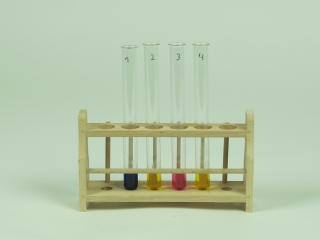Principle
Buffer solutions usually consist of a weak acid and its conjugate base. Acids neutralise hydroxide-ions, bases on the other hand oxonium-ions. A buffer solution is produced by adding an equimolar mixture of a weak acid and its salt (e.g. acetic acid and sodium acetate) or a weak base and its salt (e.g. ammonium chloride and ammonia).
In this experiment students will examine the basic characteristics of a buffer solution by adding a strong base (here: NaOH) and a strong acid (here: HCl) to a buffer solution (here: acetate buffer).
Learning objectives
- Operation mode of a buffer solution
Benefits
- Experiment literature available for pupils and teachers: Minimum preparation time
- Simple teaching and efficient learning by using the available interactive experiment literature


